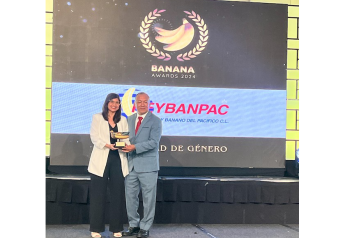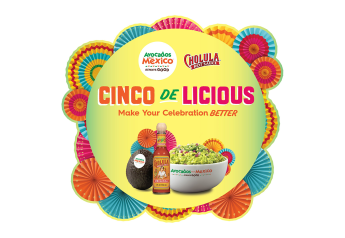Rabobank report evaluates what is next for organic produce growth beyond pandemic bounce

The pandemic was very good for organic produce demand, and new research from Rabobank looks at the reasons behind that surge and what may be next for the sector.
Rabobank fruit, vegetable and nut analyst Almuhanad Melhim authored the October report called The State of North American Organic Produce: A Closer Look at Post-Pandemic Trends and Emerging Issues.
In the report, Melhim considered why the growth rate of retail organic food sales will likely decline after the pandemic effect wanes. Even so, Melhim’s analysis indicates retail organic sales will remain higher than the pre-pandemic rate.
Pandemic boom
In 2020, retail organic food sales increased by 13% year-over-year, to $56.5 billion, according to retail scan data.
Several factors during the pandemic encouraged consumption of organic food and fresh produce, Melhim said.
A relevant example of another crisis that spurred organic consumption was the BSE crisis (Mad Cow Disease) for cattle close to 10 years ago.
“These crises affect the consumers’ perception about the safety of their food, so consumers try to mitigate that sense of risk from the food they consume,” he said.
During the BSE crisis, demand for organic beef surged.
“There is this expected demand surge when we see health crises, so that is one part of the equation,” he said.
Other factors were actions taken in the aftermath of the pandemic, such as the lockdown that kept people at home and restaurants closed. Pandemic relief payments to Americans created an increase in disposable income that also led to higher organic purchases, he said. In addition, online shopping opened new options for organic consumers, he said.
This year, Melhim said organic fresh produce demand has slowed, in response to the reopening of foodservice and a return to the office for many Americans.
Even so, Rabobank expects elevated organic fresh produce demand to linger as pandemic habits persist.
Preferences for cooking at home, including the organic ingredients they buy for those at-home meals, will continue for many.
Some people will have embraced a new-found passion for organic produce that will linger after the pandemic he said.
Import importance
One key element in the Rabobank report is the recognition of the increased role of imported organic produce.
Latin American countries without much previous history of shipping organic produce to the U.S. are doing so now in greater volume.
Since 2016, according to the Rabobank report, the number of non-U.S. certified organic operations grew by 37% to reach about 17,000 operations in just over 150 countries. The report said about half of those operations represent fresh fruit and vegetable suppliers.
In 2020, non-U.S. organic shipments, mostly from Mexico, accounted for 11% of total shipments, increasing from just 3% in 2016.
Midway through 2021, the Rabobank report said that organic fresh produce shipments to the U.S. accounted for an astounding 46% of total organic shipments, compared with an average of 13% for the previous three years.
The report said that nearly half of the imported organic shipments came from Mexico, with that country now a major supplier of organic blueberries, grapes, strawberries, bananas, mangoes, many vegetables, and recently, avocados and lemons to the U.S. market.
The rise in imported fresh organic produce reflects increased investment in the infrastructure around organic shipments, Melhim said.
“This infrastructure is now available, it is online, and it is bringing in supplies,” he said.
If demand continues to grow, Melhim said it is likely the U.S. will see continued growth of imported organic fruits and vegetables.
In the U.S., the Rabobank report said growth also has been strong in recent years, but it has slowed. From 2016-20, domestic shipments of organic fruits and vegetables grew at a 22% compounded annual rate, according to the report. However, total domestic organic fresh product shipments in the first half of 2021 were about 15% and 10% lower than the first half of 2020 and 2019, respectively.
Long term growth
Consumer demand for organic produce is likely to increase in coming years, since many associate organic produce with a healthful, safer product.
The bigger question, Melhim said, is the supply side of the equation.
“Are (more growers) going to jump in? Are there enough premiums to pay for that switch? Because clearly it is a very costly endeavor,” he said.
The sluggishness of domestic growers committing to organic production may be answered by increased levels of imports, he said.
In general, the Rabobank report said the premiums for organic fruits have been pressured in recent years more so than the premiums for organic vegetables.
“That’s because there has been quite a quite an expansion in the organic production of fruits, which led them to become slightly more mainstream than vegetables,” he said.
Consumers have become more familiar with organic fruit, and organic fruit is price competitive with conventional produce at big box retailers.
The Rabobank report said the growth of organic production among indoor growers is another a significant trend.
“(Indoor agriculture) will continue to challenge the traditional organic paradigm by offering key and distinctive benefits,” according to the report. Those operations without soil, the report said, use less water, enjoy higher yields and produce crops year-round with the ability to deliver products fast, often with fewer food miles.
“(Indoor operations) still have many hurdles to cross to improve their bottom lines,” the report said. “While overhead and energy costs can be significant, the organic label should help reduce financial risk.”
In general, the Rabobank report said the long outlook for organic produce seems positive, and both retailers and consumers continue to drive growth.
Year-round organic fresh produce supply, the widespread availability for organic fruits and vegetables at all food retailers, the rising influence of younger consumers and the overall consumer attraction toward healthful and sustainable food are strong signs for future organic growth, the Rabobank report said.







